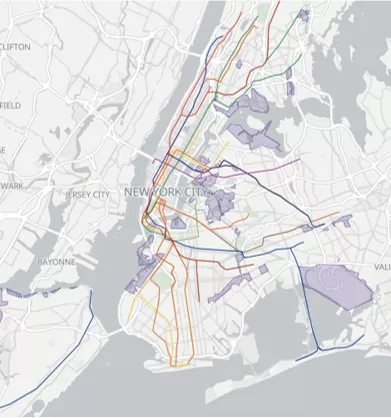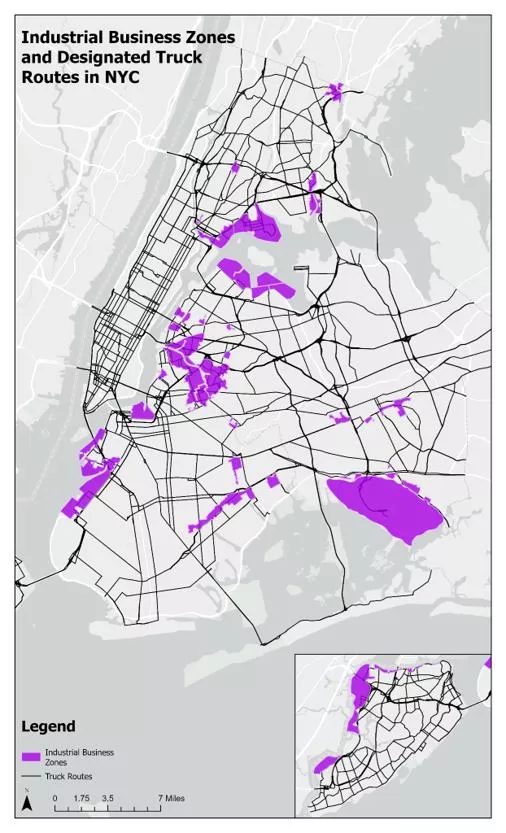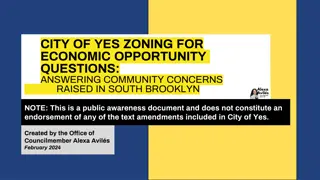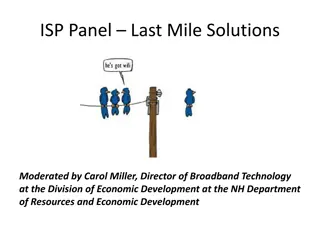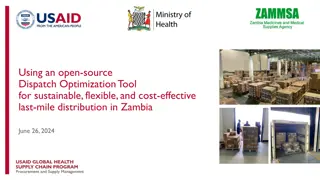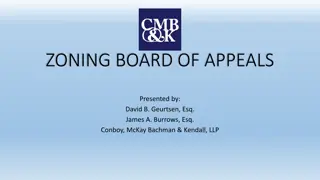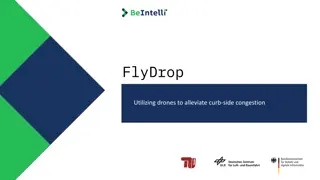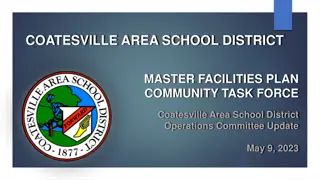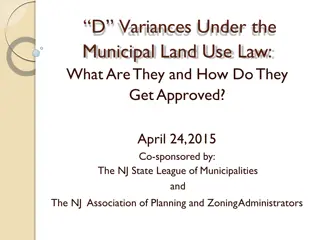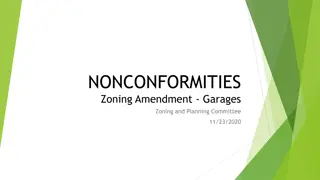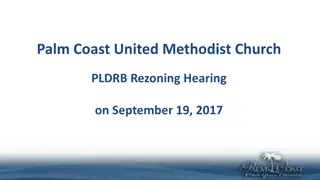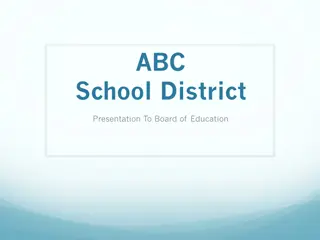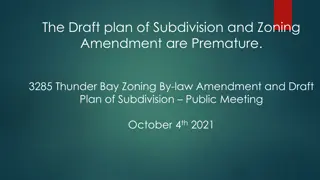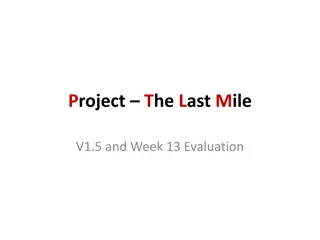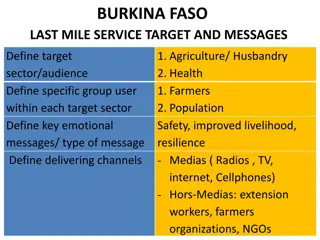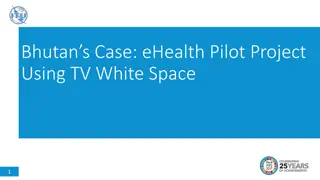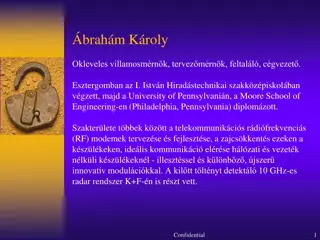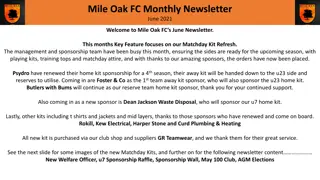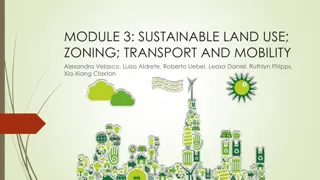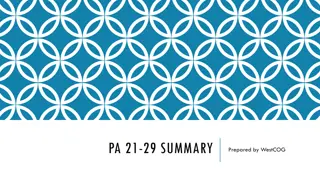Last Mile Facilities Impact and Zoning Challenges in District 38
District 38 is facing challenges with the proliferation of Last Mile facilities due to antiquated zoning laws. These facilities, often classified as traditional warehouses despite their distinct operations, are leading to homogeneity in services, limited waterfront access, and traffic congestion in the community. The Last Mile Coalition is working towards addressing these issues through the City of Yes initiative to better accommodate the diverse manufacturing needs of the city.
Uploaded on Sep 15, 2024 | 0 Views
Download Presentation

Please find below an Image/Link to download the presentation.
The content on the website is provided AS IS for your information and personal use only. It may not be sold, licensed, or shared on other websites without obtaining consent from the author. Download presentation by click this link. If you encounter any issues during the download, it is possible that the publisher has removed the file from their server.
E N D
Presentation Transcript
LAST MILE AND ZONING FOR ECONOMIC OPPORTUNITY Council Member Alexa Avil s and Council Member Alexa Avil s and The Last Mile Coalition The Last Mile Coalition NOTE: This is a public awareness document and does not constitute an endorsement of any of the text amendments included in City of Yes.
Snapshot | Citywide Brooklyn: Brooklyn Navy Yard, East New York, Flatlands-Fairfield, Greenpoint-Williamsburg, North Brooklyn, Southwest Brooklyn Bronx: Bathgate, Eastchester, Hunts Point, Port Morris, Zerega Queens: Jamaica, JFK Industrial Corridor, Long Island City, Maspeth,. Ridgeway/SoMA, Steinway, Woodside Staten Island: North Shore, Rossville, West Shore
Snapshot | D38 Last Mile Facilities 1) Amazon 640 Columbia St approximately 400,000sf Amazon 280 Richards St approximately 320,000sf UPS Valentino Pier 1,200,000sf Buckeye Terminal/RXR (development in progress) Court Street 850,000sf 659 Smith St proposed 168,000sf Amazon - 55 Bay Street 90,000sf Dov Hertz - 537-555 Columbia St 88,000sf Sunset Industrial Park/FedEx 690,000sf 2) 3) 4) 5) 6) 7) 8) With more planned
District 38 is an Impacted Community Our IBZ has a proliferation of Last Mile facilities, leading to: Homogeneity in services when usage of these spaces should reflect our city s diverse manufacturing needs Limited access and use of critical waterfront Limited availability of job type and opportunity The proliferation of these facilities has meant: Additional traffic congestion in our district since our community is located along the existing NYC truck route Increased exhaust and particulate matter
Due to antiquated zoning laws, which DCP Due to antiquated zoning laws, which DCP attempts to address through City of Yes, Last Mile attempts to address through City of Yes, Last Mile facilities are characterized as traditional facilities are characterized as traditional warehouses even though the operations of last warehouses even though the operations of last mile facilities are dramatically different from mile facilities are dramatically different from traditional warehouses. traditional warehouses. This makes it hard for us to identify and address This makes it hard for us to identify and address their full impact. their full impact.
NEED FOR REGULATION Poor health and living conditions Poor health and living conditions | | A disproportionate placement and concentration of these facilities continues to occur in communities of color and low-income communities resulting in Increased noise pollution resulting in sleep disturbance, and lower mental health outcomes overall. Increased traffic and congestion caused by delivery vehicles, resulting in higher risk and incidence of injury and death. Increased air pollution With an established link between exposure to nitrogen oxides and the development of disorders such as anxiety and depression in children. Higher asthma rates. Restricting opportunities Restricting opportunities Proliferation of low paying jobs. Creating a homogenous IBZ Limiting opportunities for the city to develop climate oriented delivery solutions, such as water freight.
Passage of the ZEO in April presents an opportunity: Passage of the ZEO in April presents an opportunity: regulation of Last Mile facilities. regulation of Last Mile facilities. Afterall, ZEO already lays out rationale for micro Afterall, ZEO already lays out rationale for micro- - distribution. distribution.
DEMANDS FOR DCP 1. 1. Define last mile facilities in zoning to effectively plan for this relatively Define last mile facilities in zoning to effectively plan for this relatively new type of facility and the impacts they are having on our new type of facility and the impacts they are having on our communities. communities. Engage impacted communities and advocates within 6 months of vote 2. 2. Restrict the over Restrict the over- -concentration of last concentration of last- -mile facilities through use of innovative tools, which may include a special permit. innovative tools, which may include a special permit. Engage impacted communities and advocates within 6 months of vote. Suite of tools developed for consideration before the end of 2025. 1. 1. Limit truck and delivery related traffic and mitigate pollution impacts, Limit truck and delivery related traffic and mitigate pollution impacts, thereby improving air quality and pedestrian safety. thereby improving air quality and pedestrian safety. Final proposed set of regulations presented to impacted communities by the end of 2024 2. 2. Create industrial waterfront zoning provisions that compel Create industrial waterfront zoning provisions that compel investments and/or preservation of maritime freight access in line investments and/or preservation of maritime freight access in line with parallel city goals and plans. with parallel city goals and plans. mile facilities through use of
REMEMBER: THIS ISNT NEW Work that s been done in other municipalities Buffalo, NY Township of Bridgewater, NJ Branchburg, NJ Windsor, CT Newton, MA (pending) Hanover, PA San Francisco, CA Vancouver, WA New Jersey State







